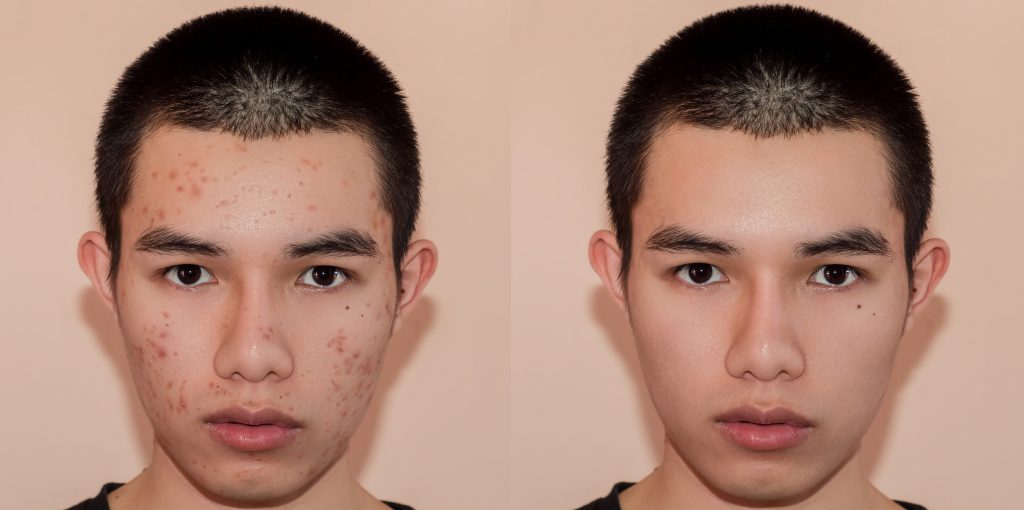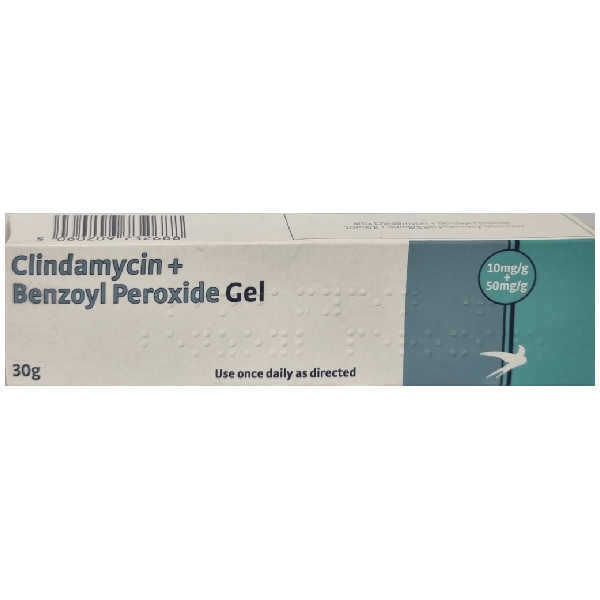
Struggling with acne can feel like an endless battle, but you’re not alone. As those affected by acne will know, it can significantly impact your self-esteem and quality of life. So seeking treatment isn’t just about looking good; it’s about feeling good too. At Click2Pharmacy, we understand the emotional and physical effects acne can have, and we’re committed to helping you find relief.
And that’s why we’re keen to talk about using Clindamycin for acne treatment as a potential game-changer in your fight against acne.
Originally used for treating various bacterial infections, Clindamycin is an antibiotic that has proven its effectiveness in treating acne too. It works by stopping the bacteria that lead to acne, making it a solid choice if you’re looking for effective treatment. Unlike other options, it directly targets the root cause—helping to nip the issue in the bud.
For acne treatment, clindamycin is often used topically (applied to the skin) in the form of gels, lotions, or solutions.
Using topical Clindamycin for acne works by targeting skin bacteria, the root cause of acne for many acne sufferers. In a nutshell, the benefits of using Clindamycin to treat acne include:
Let’s look at all of these in a bit more detail.
Acne isn’t just about clogged pores or excess oil. It’s often exacerbated by bacteria, specifically Cutibacterium acnes (previously known as Propionibacterium acnes). Clindamycin hones in on these acne-causing bacteria, helping to reduce their numbers significantly. Clindamycin is known for its potency against acne-causing bacteria, which sets it apart from other treatments.
Beyond just its antibacterial properties, Clindamycin has anti-inflammatory effects. This means it tackles the root cause of the acne (bacteria) and helps soothe any redness and swelling caused by inflamed acne spots.
Clindamycin has been a staple in the dermatological community for years, with numerous studies and dermatologists recommending it for effective acne treatment.
Clindamycin can be combined with other acne treatments, like benzoyl peroxide, to amplify its effects. Such combinations can tackle acne from multiple angles, with comparative studies finding a combination of Benzoyl Peroxide and Clindamycin being the most effective treatment for acne.
Clindamycin is applied directly to acne-affected areas as a topical treatment, ensuring the medication goes right where needed. This can often lead to fewer systemic side effects compared to oral medications.
Clindamycin can be a suitable treatment option if you’re battling blackheads, whiteheads, or more painful cystic acne. Its versatile action makes it adaptable for various acne presentations.
Topical Clindamycin for acne treatment typically comes as a gel or a cream and is recommended as part of your daily skincare routine. You should follow the instructions provided by your prescriber. However, most products and prescribers recommend washing your face with a gentle cleanser, pat drying, and applying a thin layer of your topical Clindamycin product on the affected area.
It’s also important to remember there is no “overnight fix” for acne. To get the most out of your treatment, apply consistently and give it time to work its magic.
Clindamycin isn’t intended to be a long-term solution for acne; it’s a quick, effective rescue operation targeting acne at the root cause. Typically, you shouldn’t be using it for more than 12 weeks without consulting a doctor. As everyone’s skin is different, it’s important to speak with a healthcare provider who will give you the best advice tailored to your situation.
No medication is without its potential side effects, and it’s crucial to be informed to make the best decisions for your skin. Clindamycin, while effective for many, does come with a set of possible side effects that you should be aware of:
Though rare, especially with topical application, some systemic side effects can occur due to Clindamycin’s antibiotic nature:
In very rare cases, individuals might experience an allergic reaction. Symptoms might include rash, dizziness, swelling (especially of the face or throat), and severe dizziness. If you suspect an allergic reaction, it’s essential to stop the medication and seek medical advice immediately.
It’s essential to remember that not everyone will experience these side effects, and some people might experience none at all. However, if any side effect becomes persistent or bothersome, it’s a good idea to consult your doctor or pharmacist. They can provide guidance, suggest possible adjustments to your treatment, or recommend supportive care measures to alleviate the side effects.
When grappling with the distress of acne, you want solutions that are effective and safe. Clindamycin has been a trusted ally for many acne sufferers over the years and using Clindamycin for acne, whether applied topically or taken orally, has received the green light from major health regulators, including the MHRA (Medicines and Healthcare Products Regulatory Agency).
But, like any medication, it’s crucial to understand its safety profile and potential precautions or interactions. Let’s delve into the factors to consider:
Before starting any treatment, sharing your complete medical history with your pharmacist or doctor is essential. Some health conditions might necessitate adjustments in how you use clindamycin or possibly explore alternative treatments if it isn’t suitable for you.
For example, if you have broken skin or eczema, your prescriber will advise that you steer clear of Clindamycin and provide a treatment to tackle this first.
There might be interactions to consider if you’re on other medications, herbs, or supplements. As mentioned previously, informing your pharmacist or doctor about any other treatments you’re using is best so they can assess potential interactions and guide you appropriately.
While Clindamycin is generally deemed safe, if you’re pregnant, thinking of becoming pregnant, or breastfeeding, discuss it with your healthcare professional before starting the treatment.
Some individuals using Clindamycin might find their skin becoming more sensitive to sunlight. It’s a good practice to limit sun exposure and use sun protection when outdoors anyway, but especially so if you are using Clindamycin to treat acne.
Our online acne treatment clinic provides two topical products containing Clindamycin that have proven effective in the acne treatment of many patients across the UK.

Duac Gel contains clindamycin and benzoyl peroxide, making it a strong option for tackling mild to moderate acne. To apply, simply wash the affected area, pat dry, and apply a thin layer in the evening. Hands off those eyes, nose, and mouth, please! Also, keep in mind that Duac shouldn’t be used for more than 12 weeks.

This is the generic version of Duac Gel but offers the same active ingredients and effectiveness. The application instructions are the same as for Duac Gel. Consistency is crucial here too.
Using Clindamycin in pregnancy or when breastfeeding is not recommended. We advise you to consult your doctor before starting any acne treatment during pregnancy or breastfeeding.
It usually takes between 2 to 6 weeks before you can see results when using Clindamycin for acne treatment.
Duac Gel contains Benzoyl Peroxide and Clindamycin as active ingredients, which are both known to be effective in the treatment of acne. Since drug interactions are possible, always consult with a healthcare provider first and only use acne treatments prescribed by the same practitioner.
Yes, always check the expiration date before use.
Acne can be a real downer. But the good news is that Clindamycin can offer you the relief you’ve been searching for. With its proven efficacy and quick results, this might be the answer to your skin woes. If you’re ready for clearer skin, start a free online consultation with Click2Pharmacy’s online acne treatment clinic today, and let’s tackle this together.







